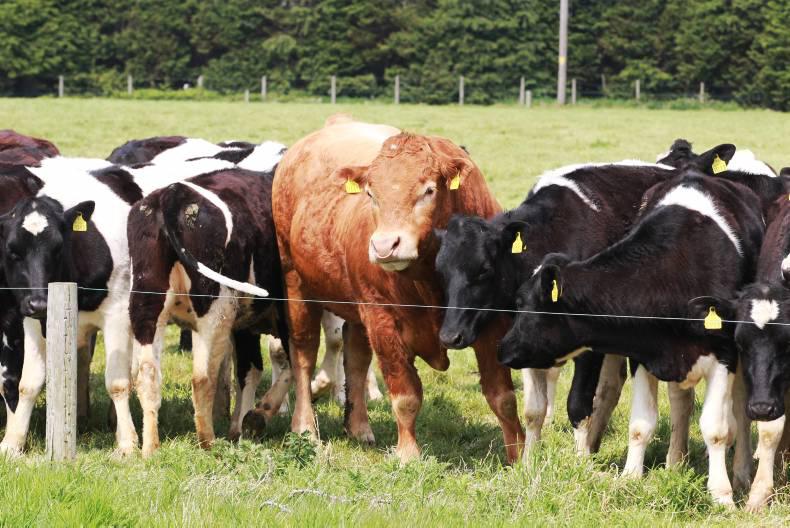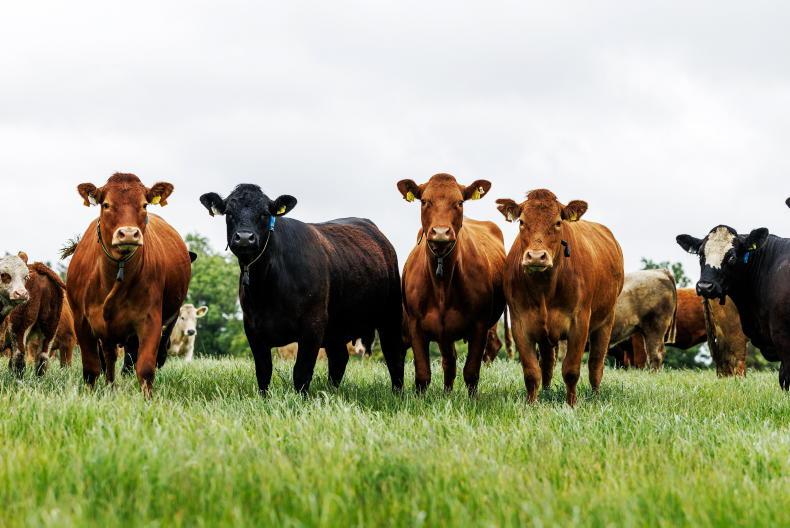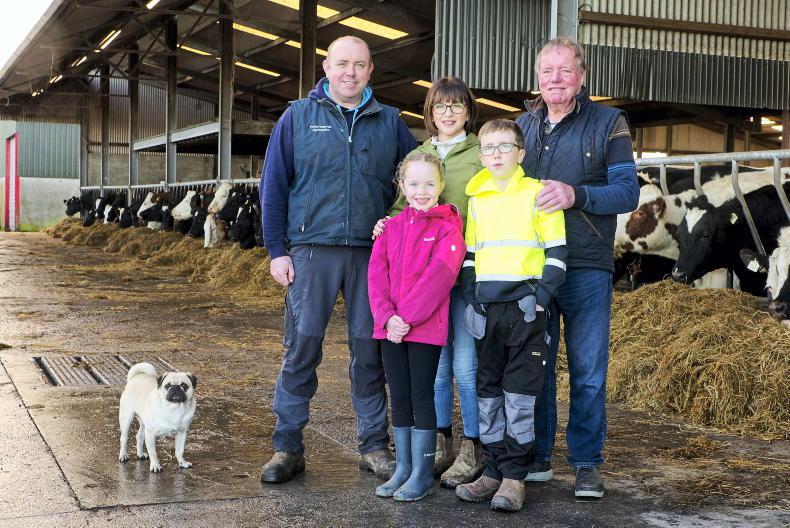Spring AI and breeding on a spring-calving dairy and suckler farm is a very busy period. Time is scarce, weather can be mixed and emotions can run high, making stress levels a serious issue.
On top of this, if output prices are low like they are now while global commodity prices are on the floor, margins can be tight, making an already stressful situation even more stressful. When operators are stressed, tired and busy, accidents are more likely to happen.
While breeding decisions are a few weeks away yet, now is the time to look ahead and decide on a plan of action. Do you want to continue doing the inseminating yourself? Given extra cow numbers or less labour around the farm, would it be a better decision to contract it out and let and AI technician come in once a day for six weeks? Would the labour be better-placed in the milking parlour allowing you the time to focus on breeding, picking up cows in heat, drafting out cows for AI, etc? Think about your options now while you still have time.
Preparing for the breeding season means getting stock bulls ready for service well in advance. On suckler farms there can often be one, two or three bulls and, while they are not with the herd, they can often be the most dangerous animals. They are often separated from herd mates and, while they wait anxiously to be reunited, they have time and energy to divert to other thoughts.
Be careful around stock bulls and handle with care. Vasectomised bulls can be as dangerous as stock bulls. Now is the time to complete the vasectomy operation if you need help with heat detection. Vasectomised bulls improve submission and conception rates on all farms where they are in use, but you must treat them as a whole bull in terms of safety.
Tail painting, drafting and separating out cows for AI can be a time-consuming process and can also be very dangerous. You need to be well prepared and equipped to let the job run smoothly. Think back on last year and what you would like to do different. Do you need to get better tail paint brushes, better spray and rub cans or better identification on cows to make the job easier? Do you need to let the vasectomised bulls out earlier?
Most will wait for the fourth week of the breeding season to release the vasectomised bulls when heat action starts to reduce as the first of the cows go in calf. Farmers should ask themselves now do they need to do anything around the parlour to make the job of AI or tail painting easier to complete.
Some have found the addition of a small step-up bar in the parlour a huge benefit, while more farmers have installed a batch crush and, from a safety and ease of workload situation, it seems to greatly reduce the pressure associated with loading cows up a crush, etc, and reducing the inseminating time.
Is it time to install that drafting gate that you have been talking about for the last five years but never seem to get the chance to complete? Automating drafting or setting up a holding pen can help you streamline the workload and ensure cows in heat are safely held in a confined space.
For me, the most important person in terms of managing safety around the farmyard must be the herd owner and operator. There is an obligation on you to look after staff, set good example, not take shortcuts, be alert to potential problems, etc. In order to be able to do this you need to have enough sleep, be well prepared and be able to give strict instructions to staff that might not be as familiar with the setup as you are. You must lead from the front on safety.
Top tips on equipment usage and machinery usage in spring
Always use approved extension reels and make sure to fully unwind extension leads when in use as they can overheat, melting the insulation and causing the equipment to become live and dangerous. Remember that an object
does not have to touch an overhead wire to become live if it comes close enough then electricity can jump a gap. Do not use electrical equipment near water or in wet conditions unless it is properly rated (IP rating for water and dust). Be aware of overhead electricity wires and never place mobile lighting close to overhead wires. If moving a portable lighting rig, always take care to avoid overhead electricity wires
along your route.If using mobile lighting which is plugged in, always use a portable RCD. Always use a registered electrical contractor to install fixed lighting installations on your farm. Ensure your lighting installation is checked regularly by your electrical contractor.
Spring AI and breeding on a spring-calving dairy and suckler farm is a very busy period. Time is scarce, weather can be mixed and emotions can run high, making stress levels a serious issue.
On top of this, if output prices are low like they are now while global commodity prices are on the floor, margins can be tight, making an already stressful situation even more stressful. When operators are stressed, tired and busy, accidents are more likely to happen.
While breeding decisions are a few weeks away yet, now is the time to look ahead and decide on a plan of action. Do you want to continue doing the inseminating yourself? Given extra cow numbers or less labour around the farm, would it be a better decision to contract it out and let and AI technician come in once a day for six weeks? Would the labour be better-placed in the milking parlour allowing you the time to focus on breeding, picking up cows in heat, drafting out cows for AI, etc? Think about your options now while you still have time.
Preparing for the breeding season means getting stock bulls ready for service well in advance. On suckler farms there can often be one, two or three bulls and, while they are not with the herd, they can often be the most dangerous animals. They are often separated from herd mates and, while they wait anxiously to be reunited, they have time and energy to divert to other thoughts.
Be careful around stock bulls and handle with care. Vasectomised bulls can be as dangerous as stock bulls. Now is the time to complete the vasectomy operation if you need help with heat detection. Vasectomised bulls improve submission and conception rates on all farms where they are in use, but you must treat them as a whole bull in terms of safety.
Tail painting, drafting and separating out cows for AI can be a time-consuming process and can also be very dangerous. You need to be well prepared and equipped to let the job run smoothly. Think back on last year and what you would like to do different. Do you need to get better tail paint brushes, better spray and rub cans or better identification on cows to make the job easier? Do you need to let the vasectomised bulls out earlier?
Most will wait for the fourth week of the breeding season to release the vasectomised bulls when heat action starts to reduce as the first of the cows go in calf. Farmers should ask themselves now do they need to do anything around the parlour to make the job of AI or tail painting easier to complete.
Some have found the addition of a small step-up bar in the parlour a huge benefit, while more farmers have installed a batch crush and, from a safety and ease of workload situation, it seems to greatly reduce the pressure associated with loading cows up a crush, etc, and reducing the inseminating time.
Is it time to install that drafting gate that you have been talking about for the last five years but never seem to get the chance to complete? Automating drafting or setting up a holding pen can help you streamline the workload and ensure cows in heat are safely held in a confined space.
For me, the most important person in terms of managing safety around the farmyard must be the herd owner and operator. There is an obligation on you to look after staff, set good example, not take shortcuts, be alert to potential problems, etc. In order to be able to do this you need to have enough sleep, be well prepared and be able to give strict instructions to staff that might not be as familiar with the setup as you are. You must lead from the front on safety.
Top tips on equipment usage and machinery usage in spring
Always use approved extension reels and make sure to fully unwind extension leads when in use as they can overheat, melting the insulation and causing the equipment to become live and dangerous. Remember that an object
does not have to touch an overhead wire to become live if it comes close enough then electricity can jump a gap. Do not use electrical equipment near water or in wet conditions unless it is properly rated (IP rating for water and dust). Be aware of overhead electricity wires and never place mobile lighting close to overhead wires. If moving a portable lighting rig, always take care to avoid overhead electricity wires
along your route.If using mobile lighting which is plugged in, always use a portable RCD. Always use a registered electrical contractor to install fixed lighting installations on your farm. Ensure your lighting installation is checked regularly by your electrical contractor.









SHARING OPTIONS